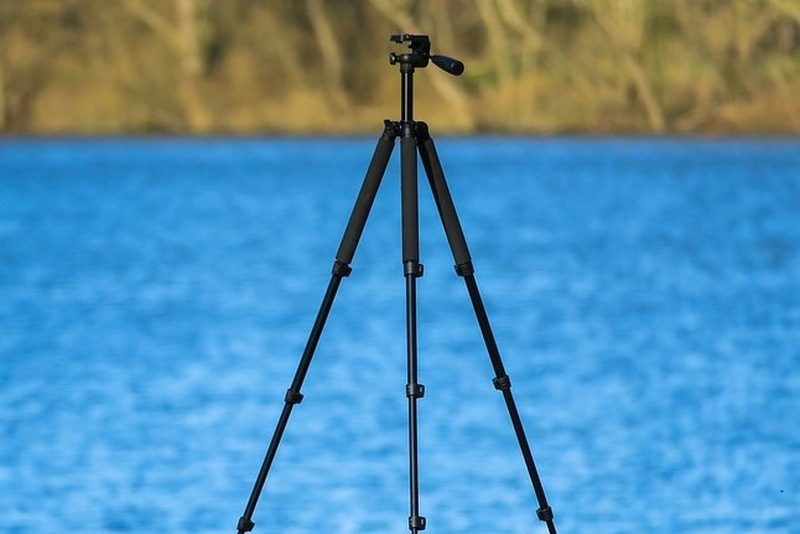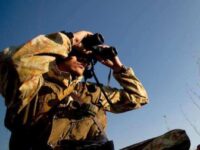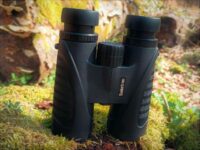Handheld binoculars are light and compact to facilitate comfortable and fatigue-free observation whether you are hiking, birding, hunting, or whenever you use binoculars. But sometimes you also want to observe a certain interesting object for a long time. Wildlife observers use their scopes with tripods, they require patience and hours of observation. But also large bright binoculars for night and astronomy are too heavy to hold with your hands for a long time without tiring. There are many situations when a tripod makes life easier. However, only the tripod is not enough, the binoculars must also be attached to the tripod, this requires a tripod adapter.
Types of Tripods and Tripod Adapters
There are various support systems for binoculars, the classic tripods, table tripod stands, the monopod, or car window mounts.
Classic Tripod
Hours of birdwatching, wildlife observations, or working with large binoculars are way less tiring with a good classical tripod.
It is called Tripod because of its three legs. Those are usually individually adjustable so the tripod can be set up on any terrain whether the ground is even or sloped. A tripod can be adjusted to the height of the user, through a height-adjustable center column on which the swiveling movable head is mounted.
The range of prices for tripods depends on the material, functions, and brand from a few dollars to a grand is everything possible.
No products found.
Table Tripod
Depending on where you are using binoculars, a table tripod can be a good solution. A table-tripod is significantly more compact and smaller than a regular tripod. As the name suggests, it is meant to be placed on a table or even on a window sill in a bird hide. Whenever there is not enough space to set up a large tripod, these small, compact devices come in handy.
Thanks to its compact dimensions and lightweight, a table tripod can easily be taken along in your gear bag when hiking or when traveling. They are stable enough to carry large larger binoculars or spotting scopes.
No products found.
Monopod
As the name suggests, monopods have only one leg and as such cannot stand on their own, but must be held permanently. The monopod is practical if you change your position often, so it not only serves as a support but also as a handle to keep the binoculars ready.
If you are on the move a lot, a lightweight monopod has some advantages over a rather unwieldy tripod, it’s much lighter to carry and you don’t have to constantly adjust the three legs to the ground. When packed, it takes up very little space and can be stowed in a carrying case or a suitable binocular case.
No products found.
Window Mounts or Clamp Mounts
Window mounts or clamp mounts are simple devices and can be practical on many occasions where a normal tripod can not be used. They can be easily attached with the help of a simple screw clamp to almost anything, be ist a car window, a wooden board, a strong tree branch, a window sill, a ladder, you can attach it to anything where the clamp fits over. Cars make good hiding places when watching birds, here window mounts are ideal.
No products found.
Criteria for buying a tripod for binoculars
What tripod is best depends on two factors – the type of binoculars and where you are going to use it.
When choosing a tripod for your binoculars, the weight of the instrument is crucial. Obviously, a large heavy pair of binoculars require a stronger and heavier tripod than fro a smaller optic. A heavy instrument on a lightweight and flimsy tripod can make the whole thing just too shaky. The tripod must be heavy enough to give the binoculars the necessary stability.
On the other hand, if you want to use the tripod for nature and wildlife observation in remote areas, the tripod must not be too heavy. You probably lugging enough gear with you anyway when hiking or hunting. Finding the right tripod is a compromise between compact dimensions, weight, and stability.
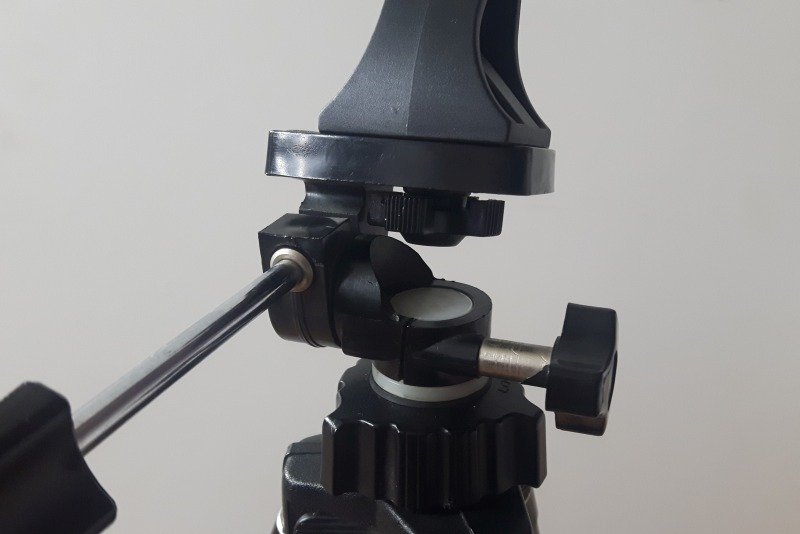
The Tripod Head
The head is the part of the tripod to which the tripod adapter or the binocular rest is attached. The head is normally equipped with a standard 1/4 “-20 screw bolt that fits all common tripod adapters.
Head Design – In principle, there are two types of heads; The ball head and the pan head.
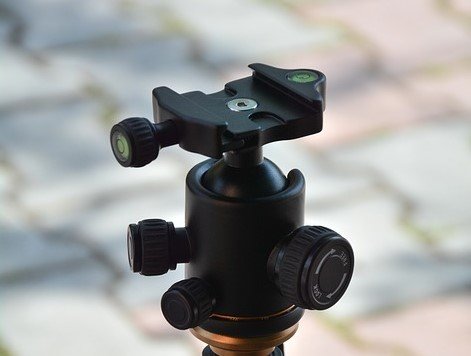
One, the ball head uses a ball joint that allows movement in all directions.
The other, the pan head, allows the instrument to be tilted (up or down) and panned (left or right) in a horizontal and a vertical axis.
If you value high-quality tripods with the best heads, there is a variety of separately high-end heads available. For example, geared heads and fluid heads will provide a particularly smooth operation. But these are more an option if you are into photography or filming.
A good middle-class tripod with a pan head should do the job well. It is important that the head moves easily and smoothly. Operation with only one hand is also desirable, so one hand is free to focus on the binoculars.
Tripod Adapter
To use a tripod with binoculars you need a device with which you can connect the binoculars to the tripod, that is what the tripod adapter is for. There are basically two types of tripod adapters:
One is a screw thread binocular tripod adapter that attaches to the 1/4 “-20 screw thread at the center hinge of most binoculars
The other is a type of snap-on device in which the binoculars are strapped to a base, which is then mounted to the tripod head using the screw bolt. This type of binoculars tripod adapter is best for binoculars that do not have a screw thread at the center hinge.
No products found.
Benefits Of Using Binoculars With A Tripod
Long-term observations with binoculars can become tiring and strenuous after a short time, you start to shake and lose concentration.
Using a tripod takes the weight off the heavy binoculars and allows you a calm and precise observation that is much more efficient and convenient than with your bare hand.
There are a variety of tripods for the various binoculars and types of nature observation. When looking to get a tripod, buy the most stable tripod that fits your type of observation and which compliments your other equipment. If you spend a lot of time outdoors, choose a tripod that’s lightweight, and that can withstand the weather so it works smoothly even in the cold. If you occasionally go birding in fine conditions, a lighter model may suffice.
